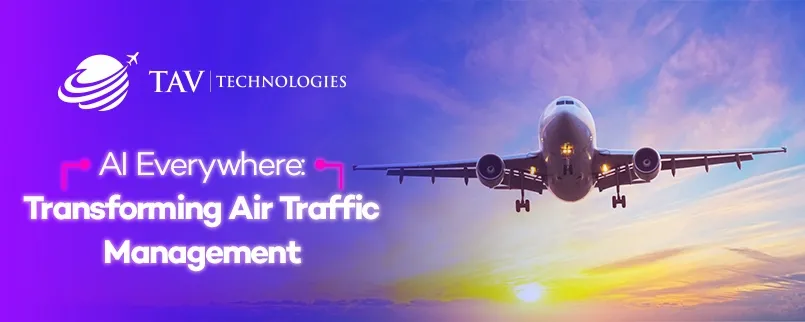
Mar 2024
Air Traffic Management (ATM) is a complex system that requires high levels of precision, efficiency, and safety. With the rapid advancements in technology, Artificial Intelligence (AI) has emerged as a promising solution to enhance ATM systems. This blog post will explore the potential benefits and challenges of implementing AI in ATM.
Benefits of Implementing AI in ATM
Enhanced Safety and Efficiency
AI can significantly improve the safety and efficiency of ATM systems. By analyzing large volumes of data, AI can predict and prevent potential conflicts, thereby reducing the risk of accidents. For instance, AI can develop conflict prediction tools and complexity assessment tools which can mitigate risky situations much earlier in a flight. AI aids decision-making by preventing overloading controllers with unnecessary work and false alarms. It also handles automated tasks traditionally done by humans, learning from experience to prevent conflicts. Additionally, this technology manages task assignments to reduce the risk of conflicts between tasks. AI-driven ATM systems can optimize routes and reduce delays, benefiting both airlines and passengers. Early trials reveal gains of between 20-30% in predictability and efficiency.
Furthermore, as cybersecurity threats continue to escalate, safeguarding data will become increasingly challenging. At this stage, the capabilities of AI will far surpass human expertise, enabling more effective mitigation of these technical challenges.
Challenges of Implementing AI in ATM
Trust and Uncertainty
While AI predictions can enhance ATM systems, they are based on probabilities, which introduces an element of uncertainty. Safety is paramount in aviation, so air traffic controllers must trust the information they are receiving. Building this trust in AI predictions among controllers is a significant challenge.
Human Factor Errors
Another challenge is managing human factor errors that compound risk, particularly among human air traffic controllers. As the industry undergoes major shifts with the incorporation of AI, focusing on the impact of human behavior is vital to mitigate risk.
How TAV Technologies Can Help your Business?
TAV Technologies offers TAMS, an all-encompassing airport management system infused with advanced AI functionalities, revolutionizing airport operations. Serving as a central hub, TAMS seamlessly integrates diverse airport functions, including passenger check-in and flight management, harnessing AI to forecast flight delays and optimize resource allocation, thereby enhancing operational efficiency and decision-making capabilities for airport personnel. TAMS continuously evolves, incorporating state-of-the-art technologies like natural language processing and computer vision to amplify its capabilities, streamline operations, and elevate the passenger experience, solidifying its role as a vital strategic ally for airports, empowering a more efficient and customer-centric environment.
Dedication to Utilizing AI for Enhanced Air Traffic Management
The integration of AI into ATM systems presents both significant benefits and challenges. While AI has the potential to enhance safety, efficiency, and decision-making processes within ATM, there are concerns regarding trust in AI predictions and the management of human factor errors. Nonetheless, the utilization of AI in ATM systems is inevitable given its potential to optimize routes, prevent conflicts, and improve overall operational efficiency. As TAV Technologies, we recognize the importance of embracing AI technologies to provide the best service and products to our customers. Through our innovative solutions like TAMS, infused with advanced AI functionalities, we are committed to revolutionizing airport operations and ensuring a safer and more efficient air travel experience. By harnessing the power of AI, we aim to address the challenges while maximizing the benefits, ultimately shaping the future of Air Traffic Management.
